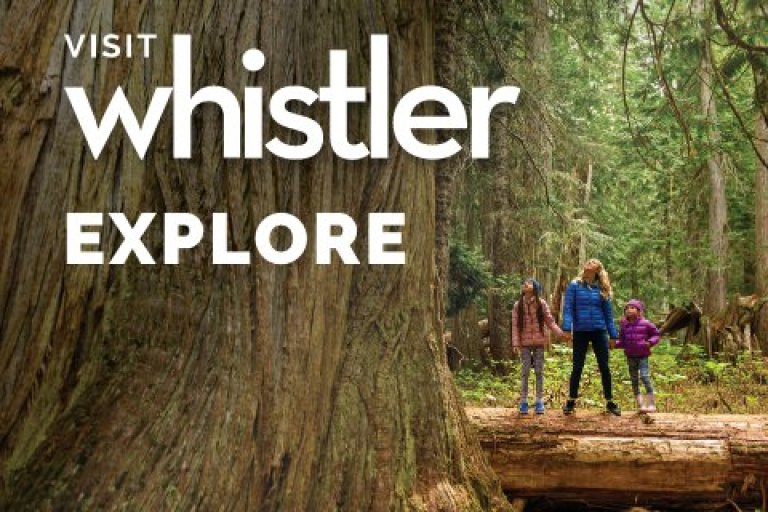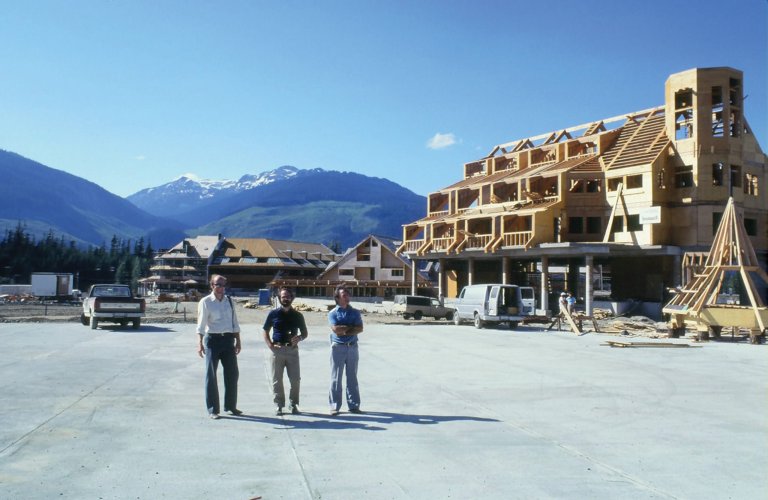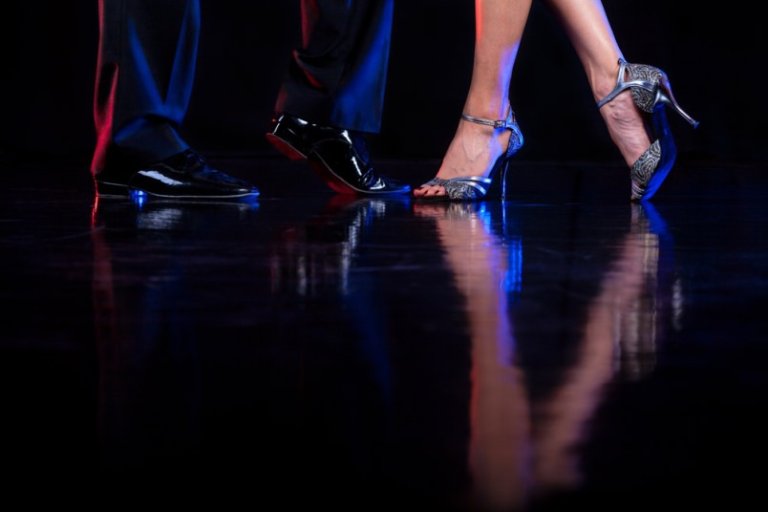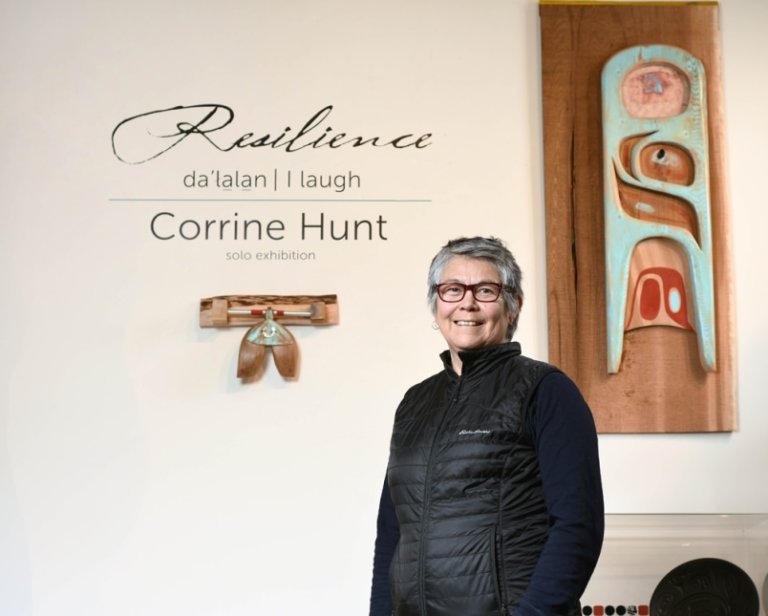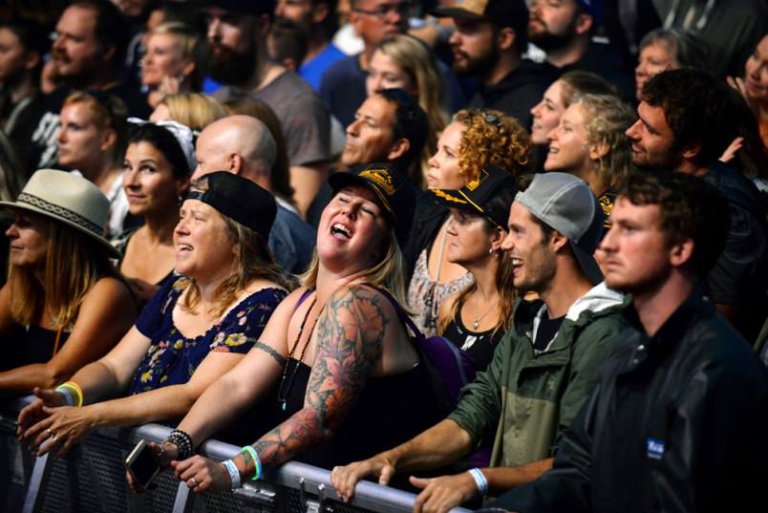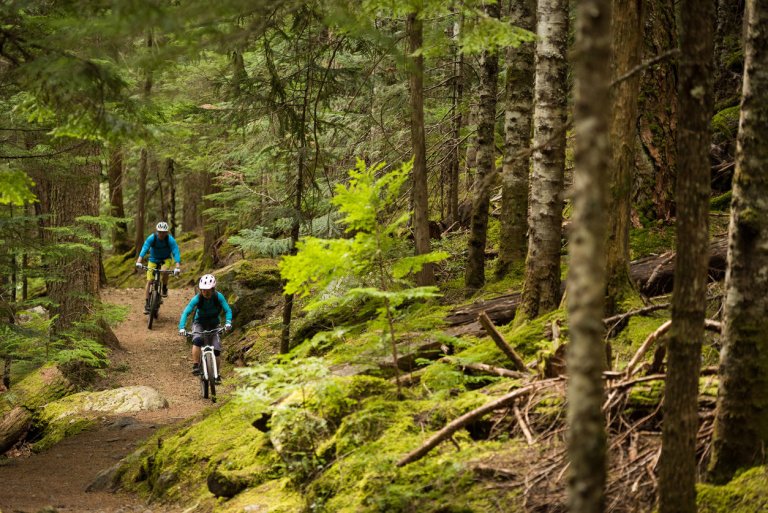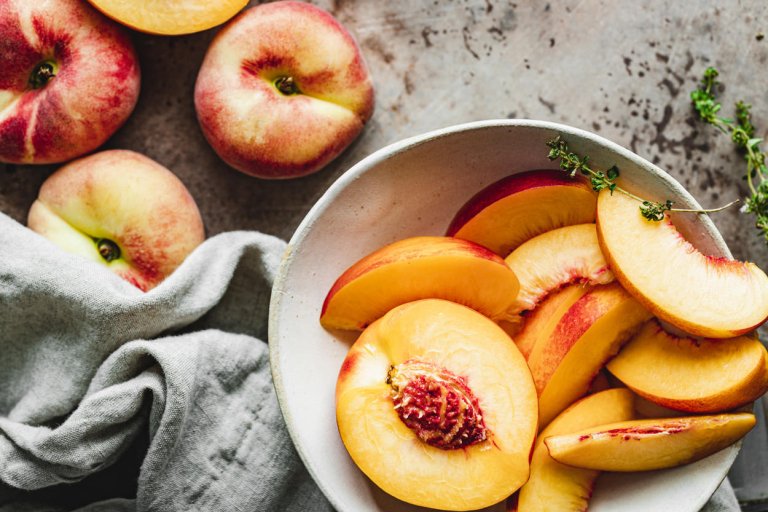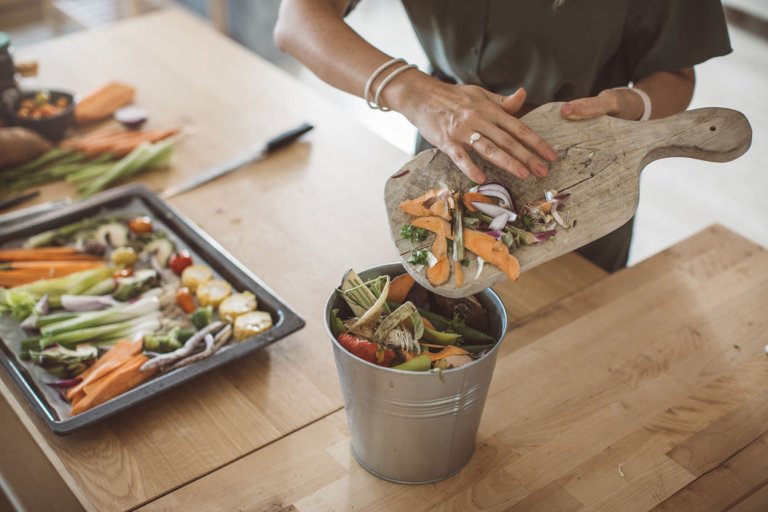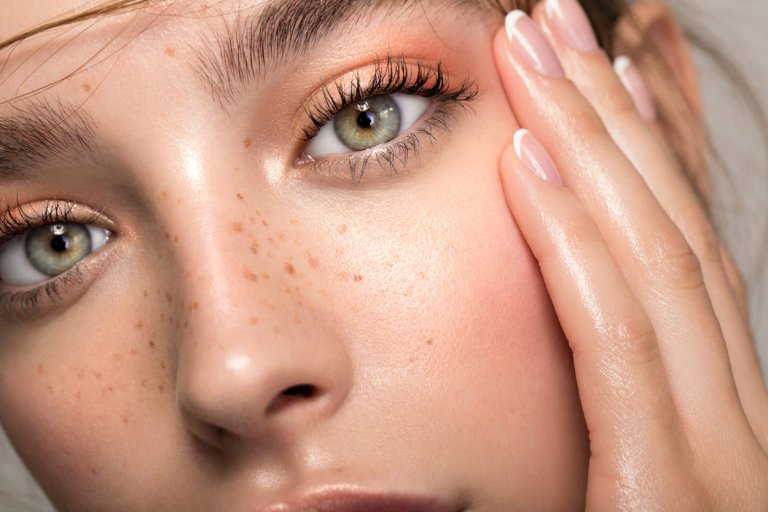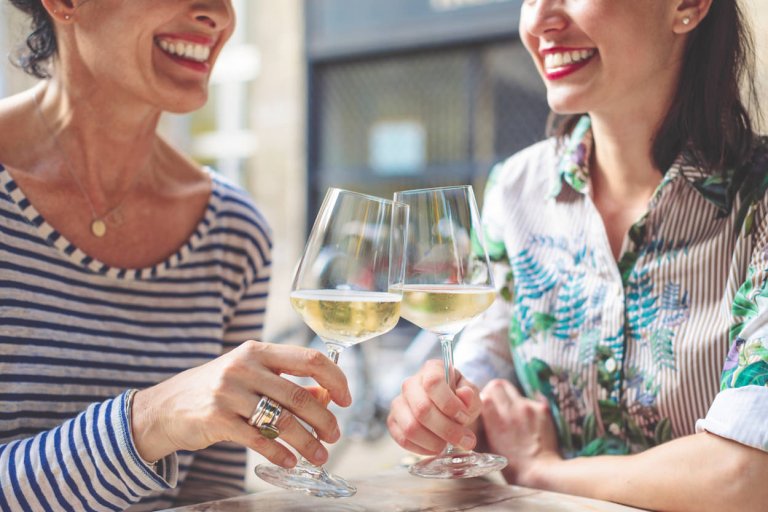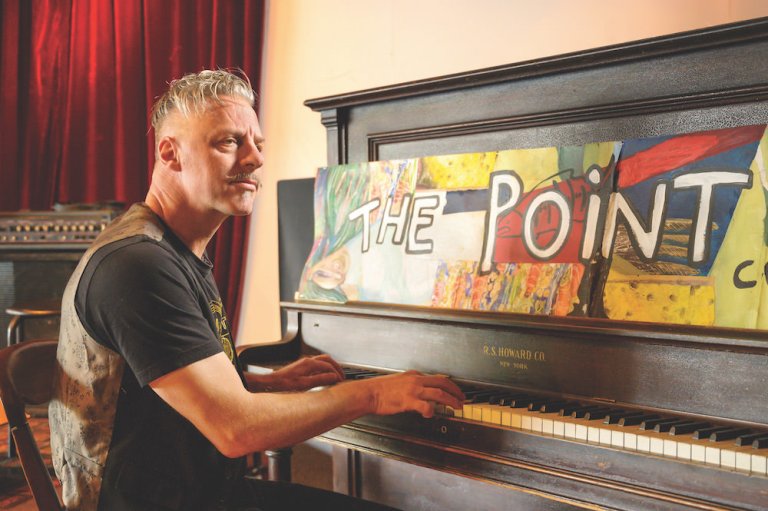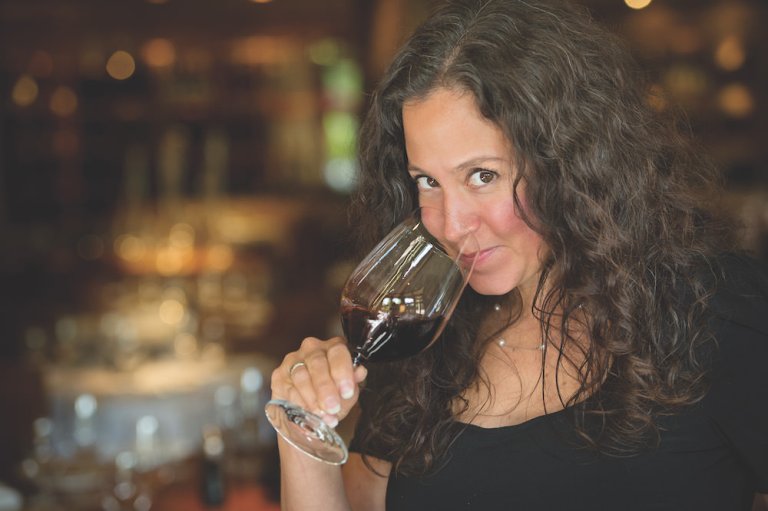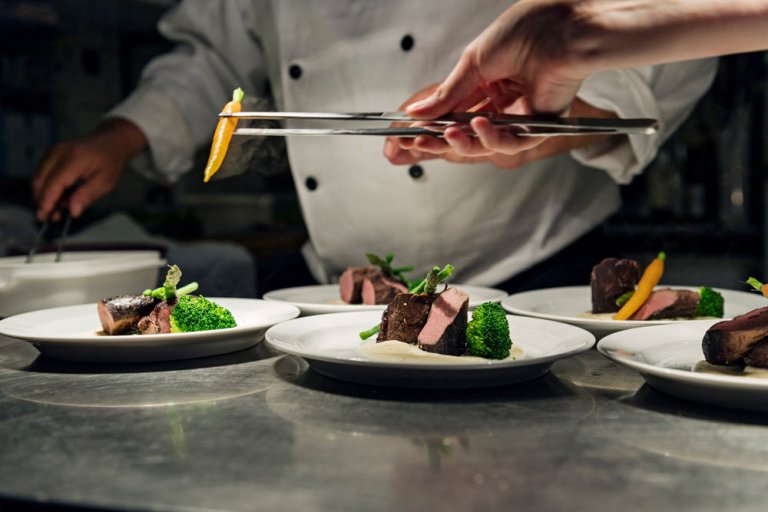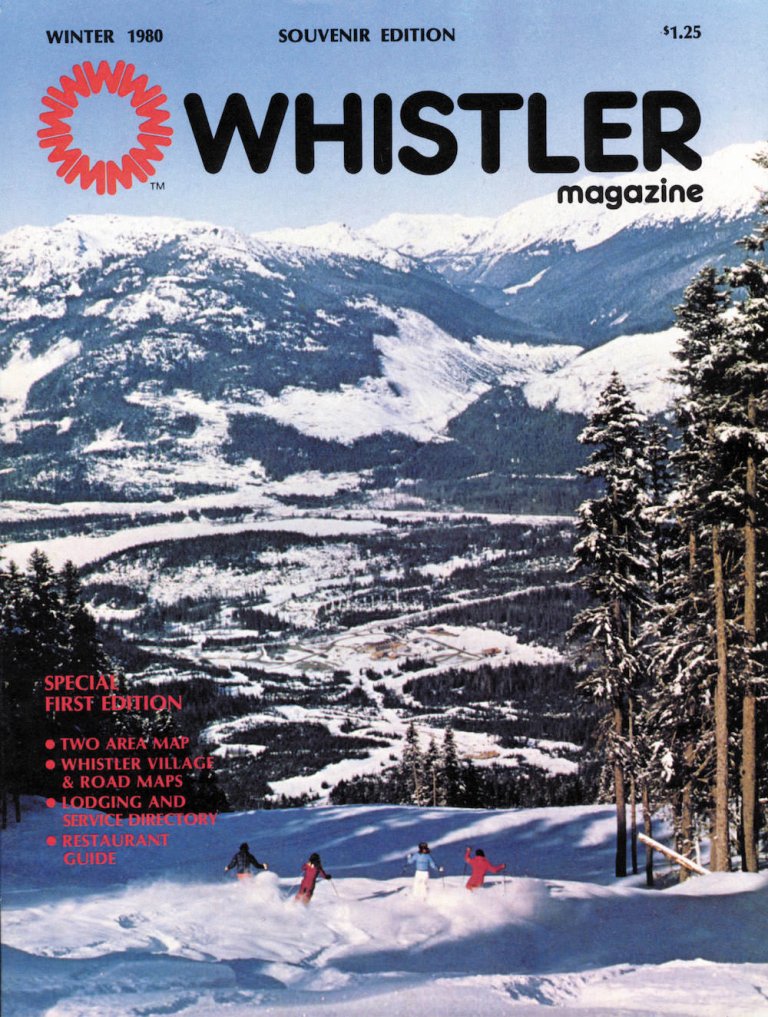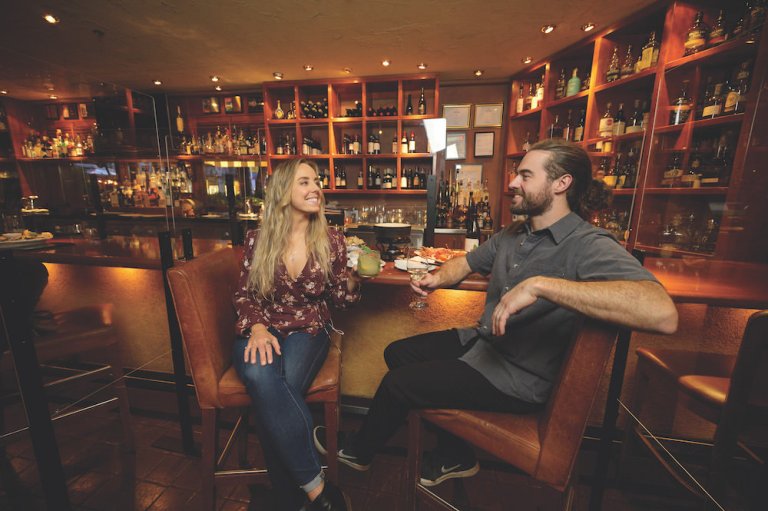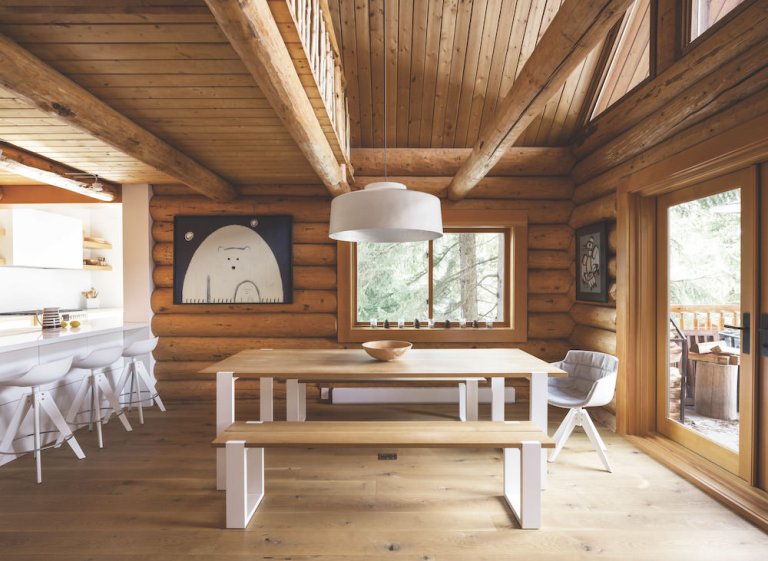Back
Global events inspire artistic evolution
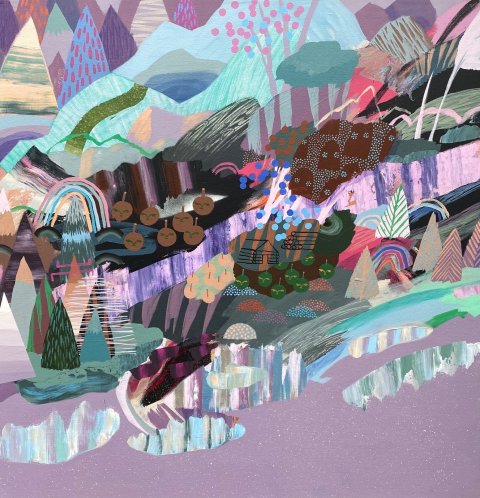
War and the pandemic have an impact on local art
By Alison Taylor
There is something about the painting Just Stop that catches the eye immediately.
It’s not just the soulful, sad eyes of the majestic bear that draw you in, an almost inescapable pull. But, upon closer reflection, you see that Just Stop has more to say. The painting is a commentary of the current state of the world, specifically the war in the Ukraine.
The work is the latest piece from local artist Doria Moodie, a contemporary painter who continues to grow and evolve as evidenced by this latest work, said Wendy Wacko, who represents Moodie at Mountain Galleries at the Fairmont Chateau Whistler.
Every time she delivers new work to the gallery, it transcends what she has done in the past. Her recent work, Just Stop, got an overwhelming response from our clients and from the art community. It was an important and bold statement of the times.
Wendy Wacko
Moodie’s art is typically a reflection of where she lives. Black bears and grizzlies, young children skiing.
Moodie’s art is typically a reflection of where she lives. Black bears and grizzlies, young children skiing.
In Just Stop, a beautiful bear looks directly at the viewer, head just out of the rippling water. Bears are so often Moodie’s subject matter but in Just Stop, the water ripples in yellow, as if a setting sun is bouncing off the surface. Above, the horizon, the sky is blue. It is, quite purposefully, the Ukrainian flag. All proceeds from Just Stop—$9,000—went to MSF Medecins Sans Frontieres (Doctors Without Borders).
The war in the Ukraine, however, isn’t the only global force that is shaping the local art.
B.C. artist Meghan Hildebrand had an epiphany of sorts over the last two years as the world turned upside down with the COVID 19 pandemic. With travel restrictions in place, she was unable to explore for creative inspiration. And, without deadlines for shows and art openings, Hildebrand really had time to look within, deeply and thoughtfully, and with an eye to the future. That time and process had a positive impact on her work, even in the face of so much uncertainty around the world.
I am acutely aware of the privilege I occupy to have a studio to work in and to have been able to receive the benefits that allowed me to work unencumbered through the pandemic,” says Hildebrand whose home base is Powell River on the Sunshine Coast. “The extended period without shows and deadlines allowed me to look at my work up to that point and decide how I want to move forward, how I want my work to fit into art history, and how I want to contribute as an artist to my community...In the studio I tried out lots of the ideas I’ve had over the years but put aside in order to create work for the market. I had new experiences, I spent time on the water, I took hundreds of photos. By the time I had a solo show last summer, my art had broken through to something new and exciting. I found a way to build up my imaginary worlds in a way that reflected my true surroundings, which really couldn’t be much more magical than they already are. I came to realize everything I need for a lifetime of painting is right here.”

New in the last year, Hildebrand now has work in Whistler at Adele Campbell Fine Art. Gallery owner Liz Harris is excited to represent her, particularly as she brought Hildebrand into the gallery at a time unlike any other. And while the pandemic did not slow art sales much as galleries like Adele Campbell quickly adapted and moved online, nothing quite beats seeing art in person, says Harris. It’s often where you find the nuances, the feelings, the emotional response to the art, particularly art like Hildebrand’s that is full of “hidden mysteries.”
Hildebrand explains some of those graphic devices she uses that change perspective, the way she uses shapes like triangles to represent trees or bottle shapes to look like towers.
“I believe my biggest influence as a painter are the illustrations from the books I had as a child, carefully chosen by my mom,” she explains. “If I think of one example, The Rainbow Goblins, the illustrations were painstakingly detailed oil paintings of the natural world inhabited by mythical beings. The more time you spent with the image, more hidden details would be revealed. I was really drawn to animal habitats, little doors and windows that would invite you to imagine the cozy interiors. I hope to inspire curiosity and close examination in my own paintings, have them reveal more secrets the longer and closer you look. My work is more cryptic than the children’s illustrations, I like to work in non-specific symbols and shapes and break the rules of pictorial space, to create more open-ended narratives.”
While these uncertain global times have fuelled the fire for creative inspiration, the pandemic in particular has changed the world for artists like Moodie and Hildebrand.
Wacko speaks to the importance of artist exhibitions, which have been sorely missed by artists and collectors alike.
“From a creative standpoint, when an artist has been invited to have an exhibition and has a strong theme, a deadline and a delivery date, it adds a layer of focus and meaning to the collection,” says Wacko. “When a gallery commits a ‘show date’ to an artist, it is a serious step, for both the dealer and the artist. The gallery acts as the gatekeeper, helps curate the collection, and establish fair market value.”
Harris agrees and hopes to present some emerging artists this summer.
“There’s something so powerful about seeing an artists’ work all together,” she says. “There is just nothing like seeing art in person.”
While the deadlines freed her creatively, Hildebrand admits she has missed the connections with potential clients and collectors.
“After the solitude of creating artwork, I really do relish the time when I get to see people take in and respond to the work,” she says. “I love the conversations I have with people, when they tell me how they see the painting, how it makes them feel. Learning what they see and feel can be so surprising and delightful.”This summer, take a stroll through Whistler’s galleries, including Adele Campbell Fine Art and Mountain Galleries, and see the art first-hand.
By: Whistler Magazine
GuidedBy is a community builder and part of the Glacier Media news network. This article originally appeared on a Glacier Media publication.
Location
Recommended Spotlights
Related Stories
-
Art Galleries Pemberton
Whistler’s architectural evolution
Highlighting the award-winning built environment By Steven Threndyle It all seems like ancient history now, but Whistler’s...
-
Antiques, Furniture & Decor Whistler
Art in the Time of Covid
When the COVID-19 pandemic first hit, Mountain Galleries wasn’t sure what to expect. Would anyone come out to buy art? Would...
-
Art Galleries Vancouver
New study finds Canadians seek out arts to relieve stress and anxiety
A new study reveals that 71 per cent of Canadians participate in cultural experiences to reduce anxiety and stress. “Culture...
-
Arts & Entertainment Coquitlam
Dance brings rhythm to Coquitlam residents
Sponsored Content Brent Smith and Barbara Ferchuk’s dance journey began just out of high school when they enrolled as...
-
Art Galleries Vancouver
Artist Corrine Hunt surmounts adversity with humour
Tweaking the mounting of her art panels in Gastown’s Coastal Peoples Fine Arts Gallery, Corrine Hunt, Kwakwaka’wakw/Tlingit...
-
Arts & Entertainment Burnaby
Blues Fest 101: Here's how to make the most of Burnaby Blues + Roots Fest
So you wanna go to blues fest? Then do it right. If you’ve never been part of the fun that is the Burnaby Blues + Roots...
-
Hiking Trail Whistler
Hiking hits new heights in Sea to Sky
Whistler is perfectly poised to make the most of the overwhelming interest to adventure outdoorsAlison TaylorJust as the first...
-
Hobbies & Leisure Whistler
Trail Mix - Things To Do & See [In & Around Whistler]
It’s a testament to Whistler, and the people who have long called this place home, that the town dreamt up as the ultimate...
-
Art Galleries Pemberton
Whistler’s architectural evolution
Highlighting the award-winning built environment By Steven Threndyle It all seems like ancient history now, but Whistler’s...
-
Local Attractions Whistler
Top Summer Activities in Whistler
The snow is melting, the birds are chirping, and the flowers are starting to bloom. Sumemr has finally arrived in Whistler! If...
-
Food & Drink Abbotsford
4 Dishes to Make with Summer Peaches
Summer is the perfect time of year to experiment with different ways to use peaches. These juicy, refreshing fruits can be...
-
Home & Garden Abbotsford
How to Create a Zero-waste Household
Reducing your household waste can help the planet in many ways. You may even be able to eliminate your waste completely if...
-
Beauty & Wellness Abbotsford
7 beauty trends for summer 2021
You may be looking forward to re-entering society this summer or at least looking better during a video meeting. Beauty trends...
-
Gifts Abbotsford
Four fabulous experience gift ideas for mom this Mother’s Day
If you’re tired of giving the same old types of Mother’s Day gifts, treat your mom with an experience instead. There are many...
-
Home Furniture & Decor Abbotsford
Working from home? 4 tips for your home office setup
Working from home can be a better experience for you with the right office setup. Setting up your in-home office correctly can...
-
Whistler
Long-term State of Mind
There’s an age-old debate in Whistler about what, exactly, constitutes a “local.” Does it refer to the number of years spent...
-
Antiques, Furniture & Decor Whistler
Art in the Time of Covid
When the COVID-19 pandemic first hit, Mountain Galleries wasn’t sure what to expect. Would anyone come out to buy art? Would...
-
Local Attractions Whistler
Backcountry Bounty
Whistler is bracing for a busy season beyond the ski area boundaries. The backcountry is beckoning like never before as skiers...
-
Food & Drinks Whistler
Classic Comforts
Many of us have found comfort during these strange times with a glass of wine. Whether you venture out to one of our...
-
Canadian Whistler
Comfort Food for Uncomfortable Times
In a year in which our lives have been completely upended, it’s often the simple things that manage to bring the most...
-
Photography Whistler
Four Decades of Telling Whistler’s Stories
For a Whistler photographer, few things beat landing the coveted front cover of a ski magazine. Greg Griffith knows. SKI,...
-
Casual Dining Whistler
Safe and Cozy
Even Whistler’s finest restaurants offer a more casual vibe; such is the nature of ski resort dining where guests are often...
-
Design & Renovations Whistler
True To Its Past
The romantic and rounded form of the traditional log cabin, once a staple in Whistler’s architectural landscape, has seen its...

